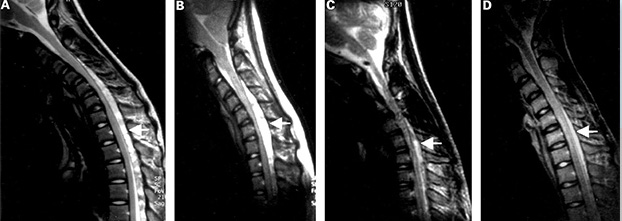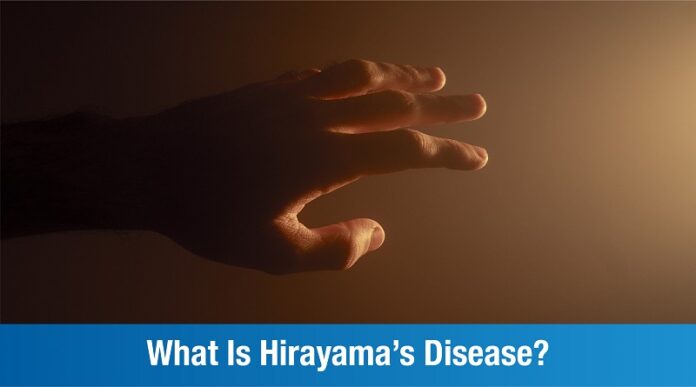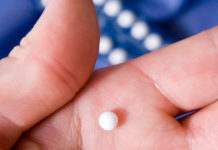Hirayama disease is a rare disease of the nervous system presenting with weakness of one or both hands. This condition was first described by Keizo Hirayama in 1959. It is also called as brachial monomelic atrophy (MMA), juvenile segmental muscular atrophy of distal upper extremity. It is more prevalent in Asia especially Japan, India, China and few south East Asian countries. In India it is commonly seen in West Bengal, Andhra Pradesh and Telangana regions. The disease is mostly seen in males in the adolescent and early adulthood age group (15-25 years).
What causes it?
The cause of this disease is not fully known. Initially it was thought to be a progressive degenerative motor neuron disease; however it may not be so. There may be genetic factors which may predispose to the disease occurrence however no specific gene has been identified with this disorder. Hirayama disease is nonfamilial in most patients.
Symptoms for Hirayama’s Disease
Typically, Hirayama’s Disease will manifest as a sudden weakness in one or both arms, leading to difficulty performing daily activities like writing or playing games. The classic symptoms for Hirayama’s Disease include:

. Weakness in the hands and / or forearms
. A ‘wasted’ appearance of the hands
. Tremors in the hands
. Unilateral / asymmetrically bilateral muscular atrophy
. Excessive sweating of the palms
. Impaired palmar grasp (the reflex by which one instinctively grasps something placed in the hand)
. Hypertonia (in some cases)
. Mild worsening of symptoms when exposed to the cold
. Slow progression in the initial years followed by spontaneous stabilization
. It is the disease’s tendency to stabilize it on its own, that separates it from motor neuron disease, which it is often mistaken for. There is also no sensory impairment in the hands.
 Diagnosing Hirayama’s Disease
Diagnosing Hirayama’s Disease
Patients who have been exhibiting symptoms for Hirayama’s Disease should visit the clinic right away. The doctor will examine the patient’s medical history and take notes on any family history of neurological conditions, before running multiple tests including blood, stool, thyroid, and urine. The diagnosis of Hirayama’s Disease is typically by exclusion, once the doctor has ruled out other possible culprits such as motor neuron disease, brachial plexopathy, multifocal motor neuropathy, and spinal cord tumours. An MRI can also detect signs like asymmetric Spinal Cord Atrophy, upper motor neuron lesions, and forward displacement of the posterior subdural sac upon neck flexion.
Treatment for Hirayama’s Disease
Hirayama’s Disease is a self-limiting condition, as the progression stabilizes on its own after some years. In addition, regular physiotherapy can help to restore strength in the arm and hand muscles and avoid secondary problems like joint stiffness or immobility.
In short, while it may be alarming to suddenly feel your hands and arms become weaker, Hirayama’s Disease is among the least serious forms of atrophy and will in fact cease progressing on its own. With early detection and intervention, you can keep the symptoms well under control and enjoy all the activities you love.


















































